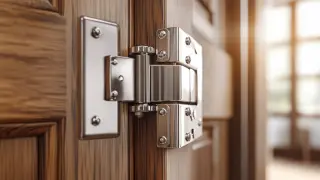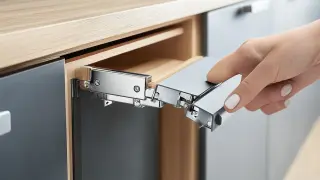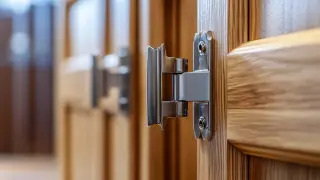Leave Your Message
The sliding door hinged systems market is unique, and the demand for newer, more efficient space solutions continues to rise across the globe. The latest market report on the sliding door hardware segment states that it is set to achieve a significant thrust due to rapid urbanization and the need for optimizing residential and commercial spaces. Technology has allowed for the creation of hinged systems that can be breathtakingly beautiful and offer great space-saving opportunities and function as an added value to the design of living areas.
At Guangdong Canhuang Precision Hardware Co., Ltd., and in the industry referred to as YOUDO, we have spent nearly 20 years tailoring our product ranges so that they may serve such needs as these. Our commitment to quality, with a fair bit of innovation involved, has immediately placed us as a leader in the area of whole-house hardware, resulting in a respectable standing amongst consumers and industry professionals. With a strategic presence on the five continents and focus on customer satisfaction, we are very much positioned to make a unique contribution to the evolution of Sliding Door Hinged systems, making sure that solutions from us remain functional and aesthetic for buyers across the globe.

While heading towards 2025, the sliding door hinged systems market is nip-in-the-bud, bringing forth advanced technology and innovative designs to accommodate increasing consumer demand. As per a series of recent industry reports, the global sliding system doors market is anticipated to grow at a CAGR of 6.2% and to reach an estimated market value of $12.3 billion by the year 2025. Growth is mainly attributed to an increasing preference for energy-efficient and space-saving architecture. Another, and perhaps even more vital, trend for 2025 is the advent of smart technology in sliding-door systems. Industry analysis suggests that about 35% of the new installations of sliding doors will be automated in order to offer comfort and energy savings. These types of smart systems can be operated remotely, enabling the opening and closing of the door with a click on a button or smart phone app and thereby greatly increasing accessibility for the mobility challenged. Innovations in materials and insulation technologies are projected to boost energy performance, as advanced composite materials provide for better thermal regulation. Besides smart technologies, sustainability remains a major focus for manufacturers. The Green Building Council estimates that about 60% of the current building projects are seeking sustainable solutions. Therefore, many sliding door hinge systems are now being manufactured with recyclable and energy-efficient materials for the needs of sustainable architecture. This change not only helps lower carbon footprints for buildings but conforms to the tenets of modern eco-friendly design, thus making a lucrative proposition for responsible consumers worldwide seeking to lend support to green initiatives in construction.
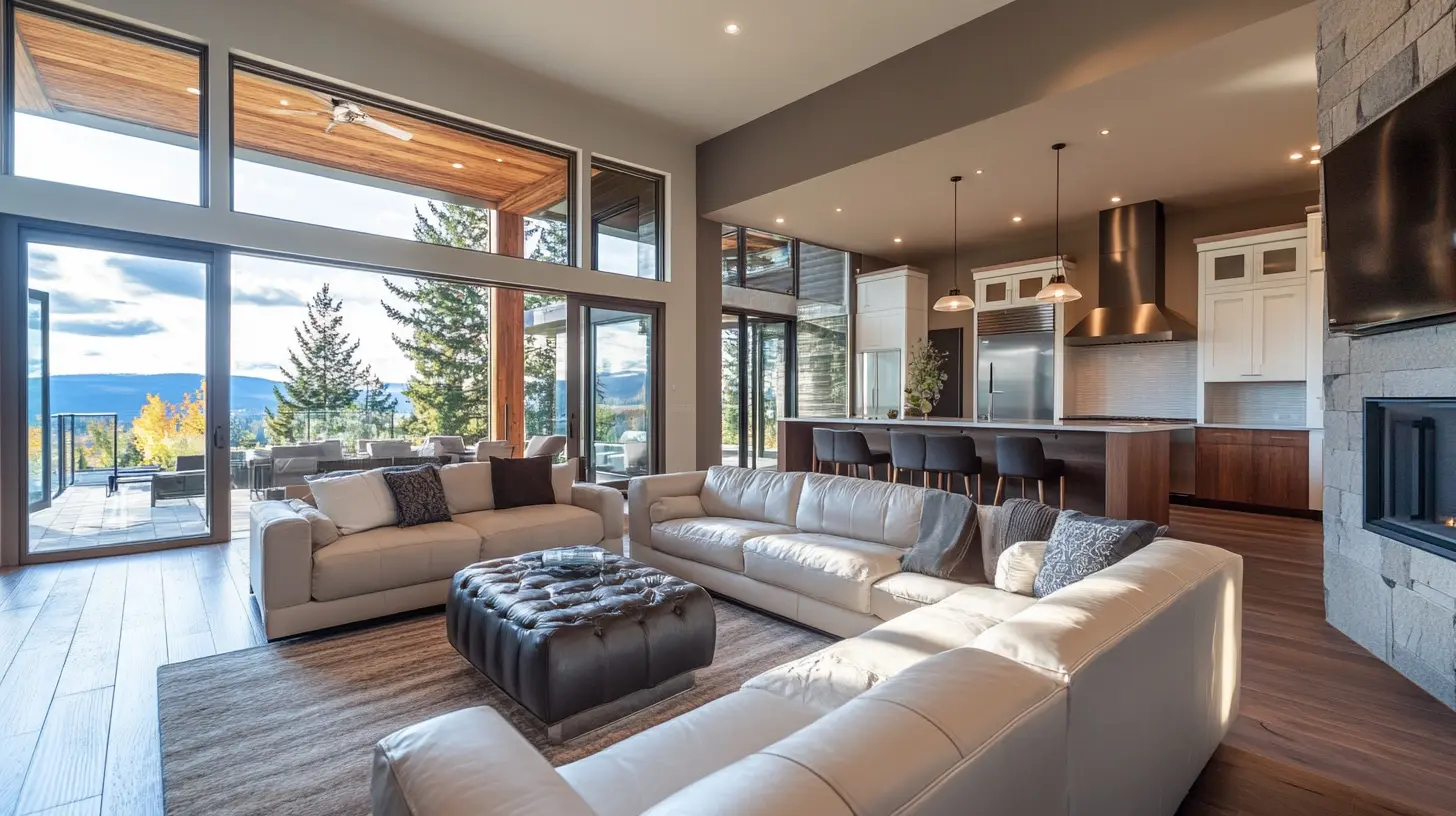
The sliding door industry is witnessing groundbreaking reorganizations to change the course of performance and functionality by 2025, such as changes in material sciences and engineering that will enhance the durability and energy efficiency of this door hinge system. According to the report released by MarketsandMarkets, the global market of sliding door is expected to reach by $42.5 billion in 2027 due to its own development concerning the demand of consumers towards improved thermal performance and aesthetics.
One of the most significant innovations is the incorporation of smart technology into sliding door systems. Automatic locking operations and motion sensors are interesting and complimentary features of such innovations to the much-needed security and convenience. According to Frost & Sullivan, the smart home automation market is growing at a CAGR of 25%, expected to reach 2026. This indicates a high interest in interconnected home systems. Modern sliding door systems are equipped with these technologies, offering users seamless control most of the time through an app on mobile devices, making them key components of smart home setups.
Another noteworthy advancement includes sustainable material introduction in sliding door systems manufacturing. The recycled eco-friendly materials accomplish regulatory requirements and fulfill customer satisfaction with the growing market section on sustainability. As per the Global Industry Analysts reports, eco-friendly building products are set to witness a compound annual growth rate of 10.5% from 2020 to 2027. The empowerment of consumers when making decisions that coincide with their values regarding the environment improves the performance of sliding door systems.
All these advances will change how a consumer takes up the sliding door. They will be functional yet intelligent and responsible choices in modern architecture and design.
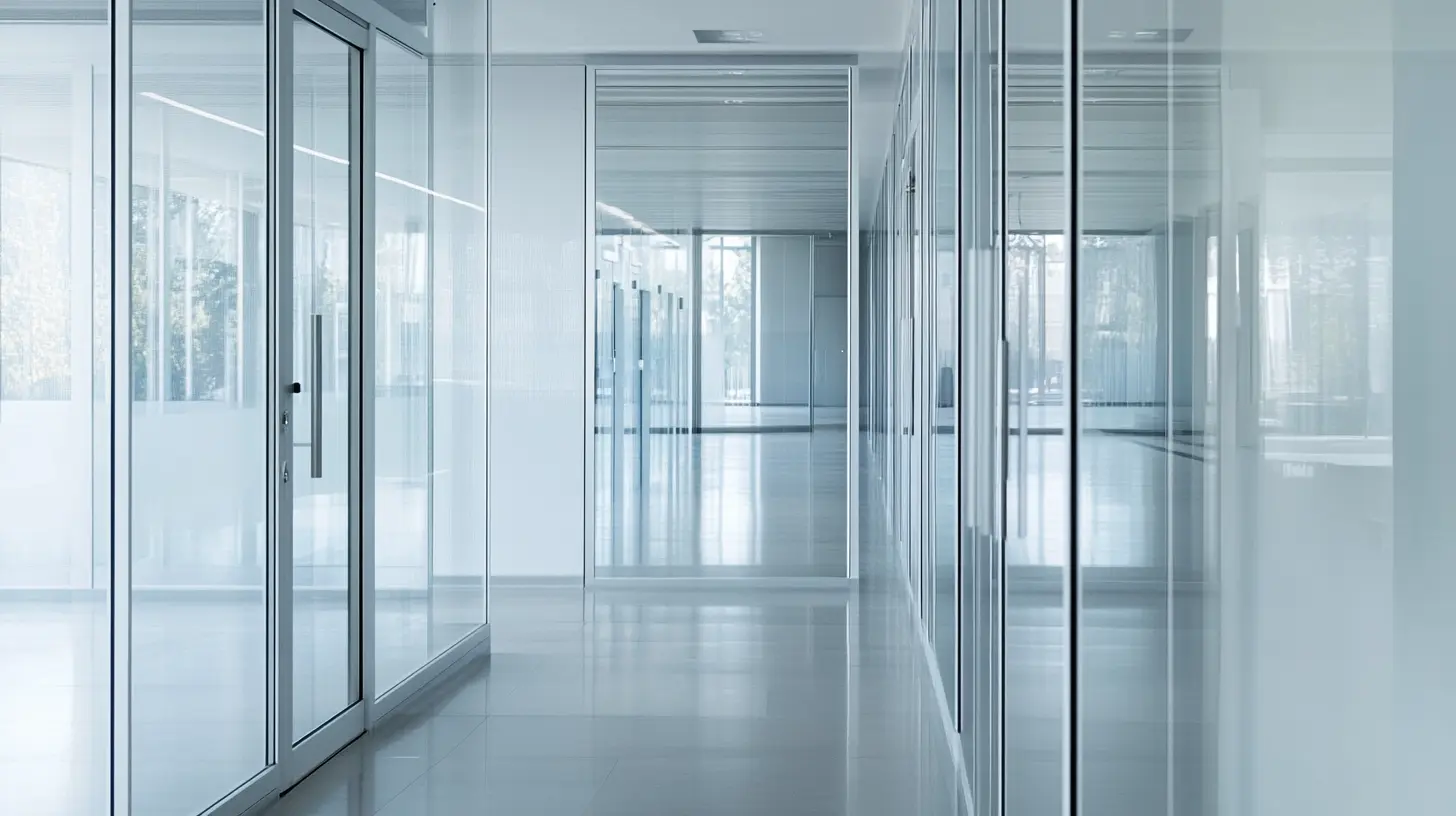
The need for sustainability in 2025 is sure to change the world where sliding door hinged systems exist. Eco-friendly materials are not only opening new frontiers in this area but also guarantee structural endurance, functionality, and the preservation of the environment. Over the years, buyers around the world will become much more discerning in this regard, demanding solutions that reduce environmental harm while enhancing aesthetics and performance.
Among some innovative materials creating a storm are bamboo and reclaimed wood. Bamboo is considered not only renewable but fast-growing; therefore, it is now regarded as the ideal ecological material for sliding doors. Reclaimed wood comes from buildings or other structures taken down and has given new life to materials which would otherwise add to waste. These reduce the requirement for virgin materials and also personalize space through their unique character and warmth.
Another promising area is recycled metals, which are developing a reputation for their durability and sustainability. Their traditional production process consumes less energy than that of conventional metals, thus advocating ecologically-responsible processes. Further, advanced, low VOC finishes ensure that sliding doors add up to healthy indoor air quality, thus making such doors suitable for modern, green living.
The market has begun turning out designs and materials, considering that buyers now worldwide are increasingly joining the trend of selecting ecolifeements. It will never be out of fashion in 2025 to think about and arrange all that matters with respect to sustainability when discussing sliding door systems and the way they can integrate into spaces.

The advent of intelligent technology and its incorporation into modern sliding doors nip the birth challenges for both residential and commercial installations. As user preference increases towards convenience and functionality, manufacturers are redoing their designs to incorporate innovative features that add even more functionality and user experience. Smart sliding doors can now be controlled via a smartphone application, or even via a home automation system, allowing users to operate a door remotely or program opening times and check its status in real-time.
On the other hand, the automated apparatuses embedded into these systems make them more accessible to all users, even the disabled. The doors could set sensors to open automatically upon approach by a person, utilizing motion or proximity detectors. This smart addition is not only convenient but also enhances security and seamless movement in busy areas, making them a necessity when it comes to modern architecture.
Trends now in class indicate that a rise in demand for technologies is emerging. Smart systems are clearly marked by sliding doors posing a sizable share of the door market. An expected boom in this industry signals that here too, we are moving towards funky designs stressing as much the aesthetic as the technical performance. The emphasis should be significantly more concerning smart technology and its relevance to purchase decisions among global buyers; this will indeed over time shape demand trends in the sliding door sector.
The passage of time and the evolution of aesthetics are changing our concepts about the living space, especially introducing modern and elegant hinged doors. As these doors are merely functional doors or pathways, they are one of the major elements of an overall ambiance of interior environments. Personalization and customization become important in any aspect of living; thus, hinged door styles can vary from modern minimalistic to classic elegant.
The door market is on a robust rampage for growth due to soaring construction and property development, leading buyers to opt for aesthetics and functional dependability in selection. With such trends, the demand thrilling innovative designs has extended even further to match up with the houses where each element of the space has become a part of the whole-the doors included. Thin profiles, beautiful, appealing finishes, and customized features in hinged doors insist on their inclusion into interiors to achieve a complete, harmonious look with individual taste.
Moreover modern interior designs become more and more dependent on the multifunctional aspects-updated houses find the importance of beautiful hinged doors with regard to household appliances that can be referred to when comparing the general environment, the need for adding elegant hinges to doors is high because these doors not only allow movement but also would probably beautify as many as possible, from an inviting to a sumptuous atmosphere. Notably, moving towards 2025 makes all the buyers should take heed before the latest innovations that relate to the world community about hinged systems.
In 2025, BBII particularly hinged sliding door systems shall bear the footprints of the diverse regional tastes backed by different market trends. With the above-mentioned innovations in design and demand, these emerging world markets are crucial in dividing global buyers. In the case of North America, demand has spiked due to an increasing number of consumers cognizant of their sustainable use and with elevated aesthetics, appeal, and functionality preference. Energy efficiency, therefore, is becoming the keyword when it comes to sliding doors, as it emphasizes green designs in environments where urban architecture dictates.
Asia-Pacific, however, has its own story to tell. Sliding doors are fast becoming common components to be found in modern houses and commercial buildings. Much of this momentum is driven by multifunctionality and approaches to saving space in line with what typifies cities; that is, small space and large population. The middle-income population that this region has raised, coupled with rapid urbanization, will also amplify the demand for these innovative sliding-door solutions within developing regions such as China and India, where demands for functionality and aesthetics are ever on the rise.
Europe has gradually shifted focus to materials of high quality and skilled workmanship. Demand for sliding doors is considerably high, but what is surprising is the fact that they are not necessarily buying off-the-shelf models; rather, buyers are going for completely customized sliding doors that perfectly fit their individual styles and tastes. Besides, there are other factors that quite impinge on buying decisions, such as the energy efficiency and sound insulation regulations that countries tend to impose on their consumers. Consequently, customers are forced to acquire items that provide high performance but still match the strict building codes. Such regional needs indicate to global buyers the need to customize their approaches according to precise market insights in 2025.
The evolution of installation and maintenance protocols for sliding-door-hinge systems in tandem with their requirements has become a focal area for the optimization of performance and longevity. With worldwide demand for advanced door solutions on the rise, industry leaders are stressing best practice implementation during the installation phase. Studies indicate improper installation has become a major contributor to failure rate of about 30%, meaning the rest, say, 30% of door systems fail less than expected and below are attributable to installation errors. Hence, buyers should be looking at whether the project is properly evaluated and professionally executed.
Again, maintenance of sliding-door systems is undoubtedly another key factor that helps prolong their serviceability. If sliding doors are maintained frequently, the service life of the installations increases tremendously; fields show that maintenance could enhance effectiveness by a good 25%. Vendors and service providers are now complementing this by adding whole maintenance contracts encompassing condition-based assessment and preventive actions. There is also greater integration of automated tools that can monitor system performance in real-time, thereby enhancing safety and convenience for all concerned.
New market opportunities created through new offerings and acquisitions testify to the industry being in constant innovation mode. Companies are diversifying their offering portfolio to cater to an increasingly diverse range of door solutions, thus aligning well with growing diversity in consumer requirements. To cite an example, the new automated door controller solution seems to fit with the momentum of the industry toward smart technology, which heralds installations that are going to be more complicated yet friendlier for the end user to work with. In this light, buyers, too, must be in line to catch up on such inventions or innovations to ensure their selections are in line with the future demand.
As developments in technology and consumer needs reshape the sliding door hinge systems market, a host of advancements is expected in 2025. A working knowledge of best practices becomes essential for global buyers weighing supplier options. The Grand View Research Report states that the global sliding door market will reach $18 billion by 2026, indicating an expanding market focused on quality and innovation. Demand is rising for eco-friendly solutions, and buyers should partner with manufacturers who provide products that are both innovative and environmentally sustainable.
Using supplier networks can also facilitate the buy side. Findings from IBISWorld show that buyers, in almost 70% of cases, prefer suppliers whose supports range from practical to customized solutions. This emphasizes the value that suppliers with the capacity to provide custom design and flexible manufacturing bring to that partnership. Buyers should form partnerships with manufacturers willing to invest in R&D, as advances in materials and technology lead to smart and efficient sliding-door systems.
Experts in the industry further recommend using digital tools to aid online supplier evaluations. By measuring suppliers on factors like production capacity, delivery performance, quality control, safety standards compliance, and customer satisfaction, buyers can make their decisions. It will be more important than ever to have open communication and collaborative innovations in the year 2025; firms that actively engage their suppliers in dialogue on their issues will develop strong alliances for mutual growth in this transforming market.
Improper installation is a significant factor, with estimates suggesting that around 30% of door systems underperform due to installation errors.
Buyers should prioritize professional assessment and execution during the installation phase to avoid installation errors.
Regular maintenance is crucial for preserving functionality, and proactive upkeep can increase operational efficiency by up to 25%.
Vendors and service providers offer comprehensive maintenance packages, including condition-based assessments and preventive measures.
The market is experiencing advancements driven by technology, including the introduction of automated door control systems and smart technology for user-friendly installations.
Given the increasing demand for environmentally-friendly solutions, buyers should prioritize suppliers that uphold sustainable practices alongside offering cutting-edge products.
Buyers should look for suppliers that provide comprehensive support and customized solutions, as well as those investing in research and development for smarter, more efficient systems.
Buyers can use digital platforms to evaluate suppliers based on metrics like production capacity, safety standards compliance, and customer feedback for more informed purchasing decisions.
The global sliding door market is projected to reach $18 billion by 2026, indicating significant growth in the industry.
Transparent communication is essential for fostering long-term relationships and mutual growth, as it allows suppliers to better address buyers' specific needs.
